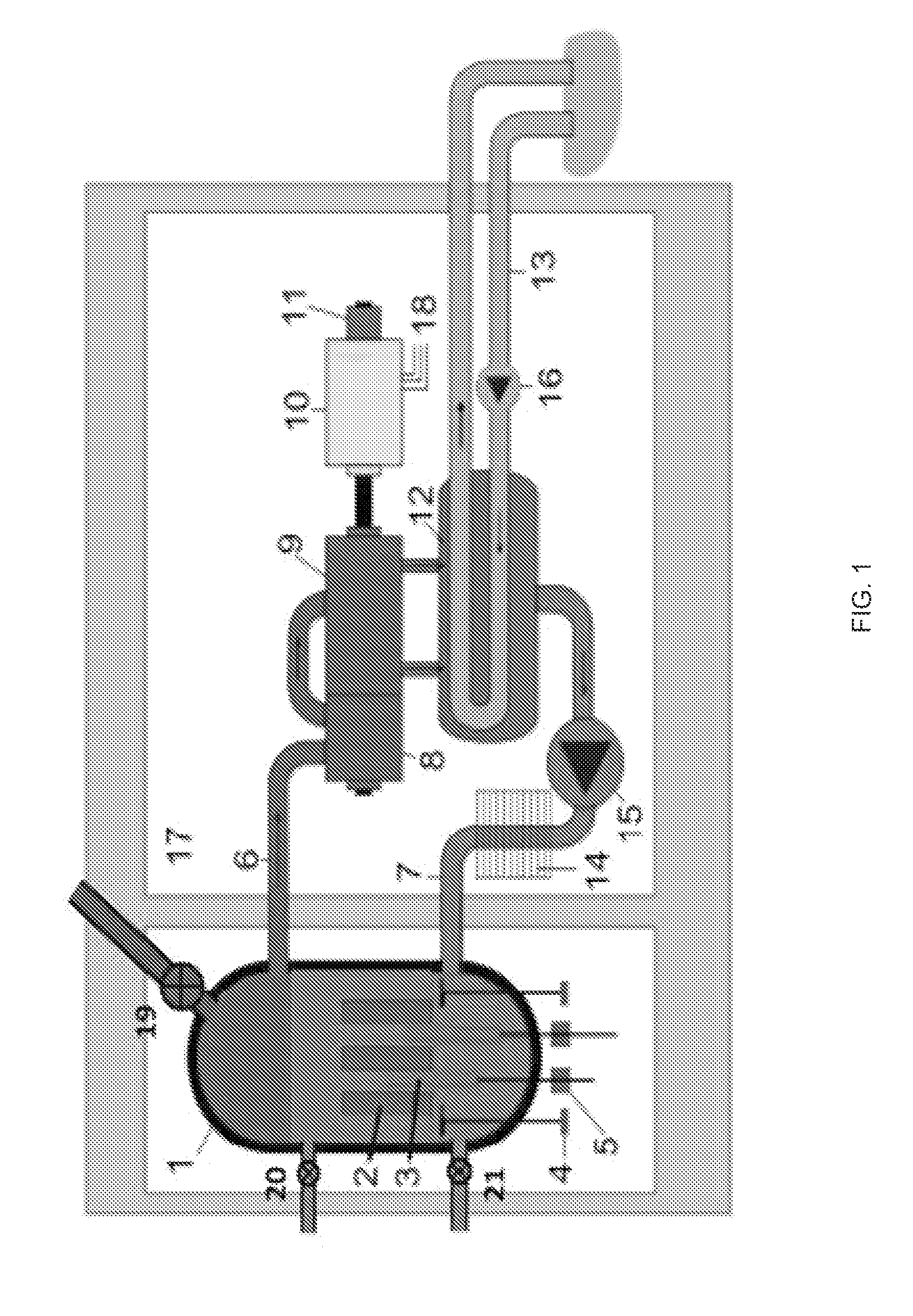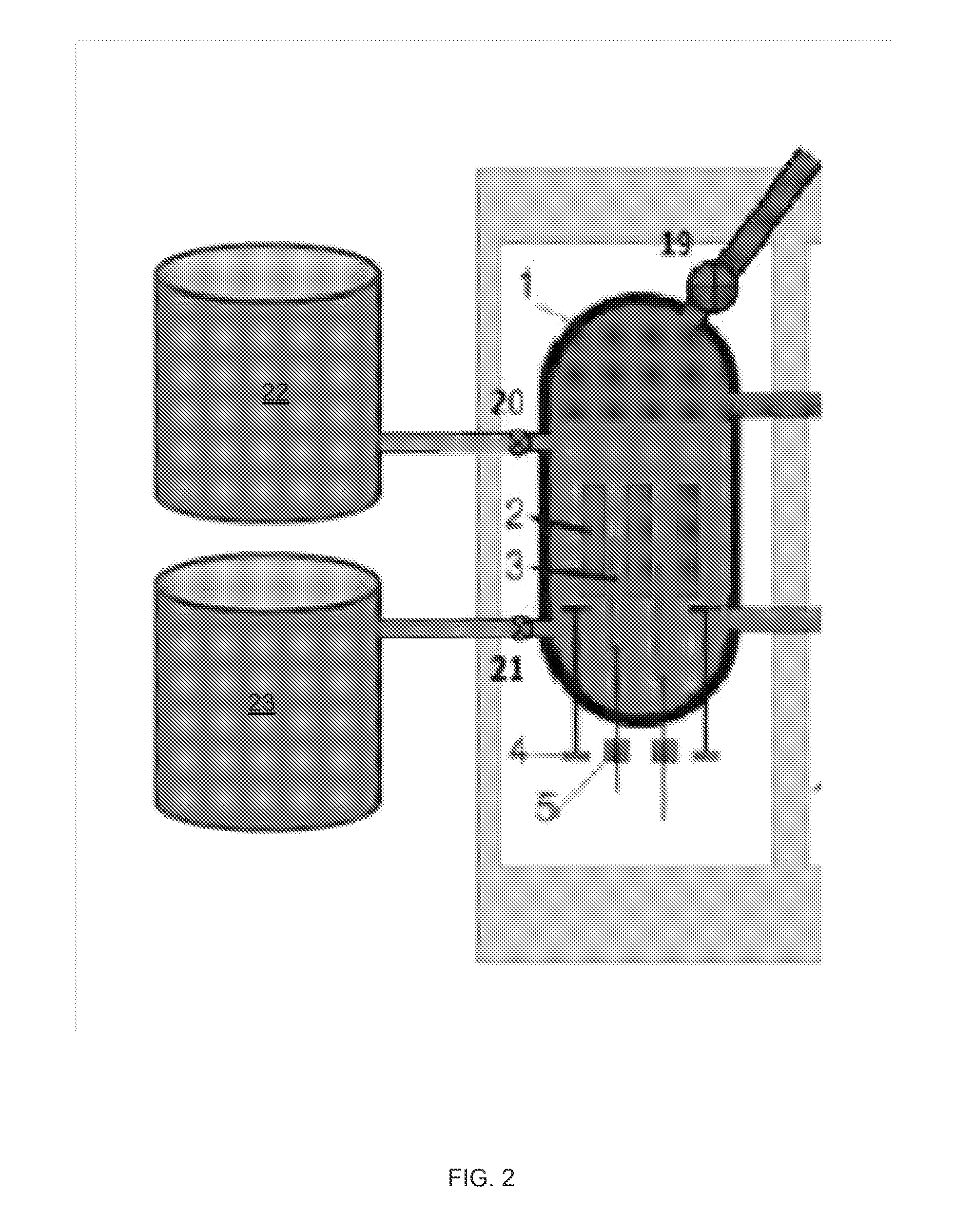Emergency and back-up cooling of nuclear fuel and reactors
a technology of nuclear fuel and reactors, applied in nuclear engineering, nuclear elements, greenhouse gas reduction, etc., can solve the problems of spherical radiation, high temperature and oxygen content, and certain exposure to extremely dangerous radioactive materials into the environmen
- Summary
- Abstract
- Description
- Claims
- Application Information
AI Technical Summary
Benefits of technology
Problems solved by technology
Method used
Image
Examples
Embodiment Construction
[0013]
Index of Elements1.Reactor Chamber, or Reactor Pressure Vessel (RPV)2.Nuclear fuel elements (rods)3.Control rods4.Circulation pumps5.Control rod motors6.Steam7.Feed-water8.High pressure turbine (HPT)9.Low pressure turbine10.Generator11.Exciter12.Condenser13.Coolant14.Pre-heater15.Feed-water pump16.Cold water pump17.Concrete enclosure, the Containment Chamber18.Connection to electricity grid19.Pressure Release Outlet and Valve20.Coolant Intake or Outlet with control valve21.Coolant Intake or Outlet with control valve.
[0014]One or more embodiments use liquid nitrogen, the densest and highly transportable form of nitrogen, and the cold nitrogen gas it produces when released from its container, for emergency cooling of fuel rods and nuclear reaction chambers. An embodiment includes a liquid nitrogen back-up cooling system to be installed in addition to the existing water cooling systems in today's nuclear power plants to improve nuclear power reactor safety.
[0015]Nitrogen gas is i...
PUM
 Login to View More
Login to View More Abstract
Description
Claims
Application Information
 Login to View More
Login to View More - R&D
- Intellectual Property
- Life Sciences
- Materials
- Tech Scout
- Unparalleled Data Quality
- Higher Quality Content
- 60% Fewer Hallucinations
Browse by: Latest US Patents, China's latest patents, Technical Efficacy Thesaurus, Application Domain, Technology Topic, Popular Technical Reports.
© 2025 PatSnap. All rights reserved.Legal|Privacy policy|Modern Slavery Act Transparency Statement|Sitemap|About US| Contact US: help@patsnap.com



